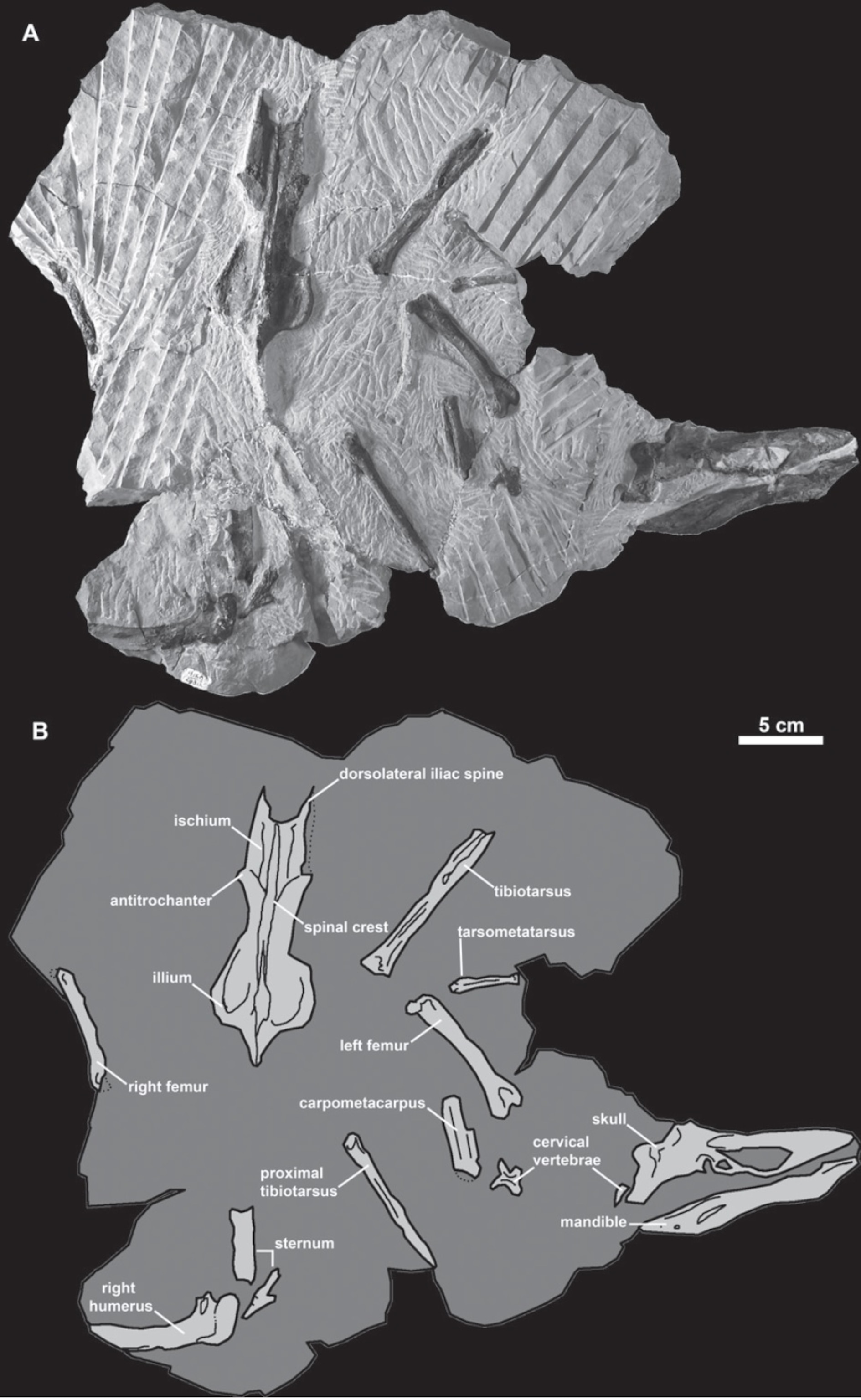At nearly three feet tall and weighing ten pounds, the Great Auk was the bulkiest member of its family of seabirds. But, despite its name, it wasn’t the largest of all time. Between 8.7 and 4.9 million years ago, there was an even bigger auk.
The bird, named Miomancalla howardae by paleontologist N. Adam Smith in 2011, was found in the Pliocene rock of southern California. It didn’t belong to the same group as modern auks and murres – called alcids – but was on just the next branch over, fitting into a wider group called pan-alcids. A sort of proto-auk, in other words. And in a new analysis of how the body sizes of pan-alcids changed over time, Smith found that Miomancalla howardae significantly surpassed the famous Great Auk in size.
Drawing on data from living and fossil birds, Smith estimates that Miomancalla howardae weighed 11.8 pounds. That’s almost a pound and a half heavier than Smith’s estimate for the Great Auk, the next largest bird in the sample. Not all auks and their relatives were huge – Smith estimates that the extinct Miocepphus mergulellus was only about four ounces – but, within this ancient and varied family, Miomancalla howardae was the greatest auk.

Fossil Facts
Name: Miomancalla howardae
Meaning: Miomancalla indicates this genus includes relatives of the bird Mancalla that were around during the Miocene, while the species name honors zoologist Hildegarde Howard.
Age: Around 4 million years old.
Where in the world?: The Capistrano Formation of southern California.
What sort of critter?: A bird closely related to alcids, or auks.
Size: About three feet tall and 11.8 pounds.
How much of the creature’s body is known?: A partial skeleton including a skull, elements of the limbs, sternum, hips, and two vertebrae, as well as an isolated humerus.
References:
Smith, N. 2011. Taxonomic revision and phylogenetic analysis of the flightless Mancallinae (Aves, Pan-Alcidae). ZooKeys. doi: 10.3897/zookeys.91.709
Smith, N. 2015. Evolution of body mass in the Pan-Alcidae (Aves, Charadriiformes): the effects of combining neontological and paleontological data. Paleobiology. doi: 10.1017/pab.2015.24
Previous Paleo Profiles:
The Unfortunate Dragon
The Cross Lizard
The Cross Lizard
The South China Lizard
Zhenyuan Sun’s dragon
Zhenyuan Sun’s dragon
The Fascinating Scrap
The Fascinating Scrap
The Sloth Claw
The Hefty Kangaroo
Mathison’s Fox
Scar Face
The Rain-Maker Lizard
“Lightning Claw”
The Ancient Agama
The Hell-Hound
The Hell-Hound
The Cutting Shears of Kimbeto Wash
The False Moose
“Miss Piggy” the Prehistoric Turtle
Mexico’s “Bird Mimic”

